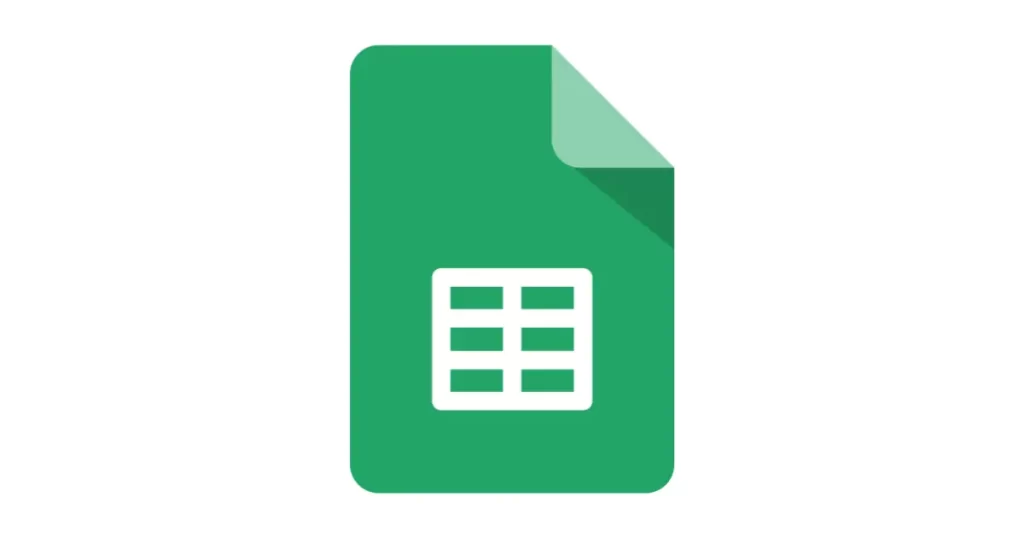Table of Contents
The Ultimate Guide to Google Sheets Tutorial
Google Sheets is a powerful spreadsheet application that allows users to create, edit, and collaborate on spreadsheets online. It is part of the Google Drive suite of applications and offers a wide range of features and capabilities for organizing and analyzing data. Whether you are a beginner or an experienced user, this ultimate guide will provide you with everything you need to know to master Google Sheets.
Understanding Google Sheets
In order to fully utilize Google Sheets, it’s important to have a clear understanding of what it is and how it works. Google Sheets is a cloud-based spreadsheet application, which means that all your data is stored online and accessible from any device with an internet connection. It provides a similar interface to traditional desktop spreadsheet applications, but with the added convenience of cloud storage and real-time collaboration.
Google Sheets offers a wide range of functionalities that make it a powerful tool for data management and analysis. One key feature is its ability to perform complex calculations and data manipulation using formulas and functions. Users can create custom formulas to automate repetitive tasks and streamline their workflow. Additionally, Google Sheets allows for seamless integration with other Google applications such as Google Docs and Google Slides, enabling users to create dynamic reports and presentations with ease.
Key Features of Google Sheets:
- Online access and collaboration
- Easy sharing and permission controls
- Automatic saving and version history
- Integration with other Google applications
Furthermore, Google Sheets provides users with the flexibility to customize their spreadsheets with a variety of formatting options. From conditional formatting to data validation, users can ensure their data is presented in a clear and visually appealing manner. The platform also offers a range of templates for common spreadsheet tasks, making it easy for users to get started quickly and efficiently.
Setting Up Your Google Sheets
Before you can start using Google Sheets, you need to set up your account and create a new spreadsheet. Creating a new spreadsheet is as simple as clicking on the “New” button and selecting “Spreadsheet” from the drop-down menu. You can also import existing data from other spreadsheet applications, such as Microsoft Excel, by selecting the “File” menu and choosing the “Import” option.
When setting up your Google Sheets account, it’s important to customize your settings to suit your needs. You can adjust the default font style, size, and color, as well as the default number format. Additionally, you can set up sharing permissions to control who can view and edit your spreadsheets. This is particularly useful for collaborative projects where multiple team members need access to the same data.
Importing Data into Google Sheets:
- Click on the “File” menu
- Select “Import”
- Choose the file type you want to import from
- Upload the file from your local drive
- Follow the on-screen prompts to configure the import options and import the data
Once you have imported your data into Google Sheets, you can take advantage of its powerful features, such as built-in formulas and functions, to analyze and manipulate your data. You can also use conditional formatting to highlight important information and create visually appealing spreadsheets. With Google Sheets’ collaboration tools, you can work on the same spreadsheet with multiple users in real-time, making it easy to track changes and updates.
Navigating the Google Sheets Interface
Once you have set up your Google Sheets account and created a new spreadsheet, it’s time to familiarize yourself with the interface. The Google Sheets interface consists of the toolbar, the formula bar, and the main spreadsheet area. The toolbar provides quick access to various formatting and editing options, while the formula bar allows you to enter and edit formulas and functions.
Understanding the Toolbar:
- File menu: options for opening, saving, and printing your spreadsheet
- Edit menu: options for cutting, copying, and pasting data
- View menu: options for zooming in or out and hiding or showing certain elements
- Insert menu: options for adding new sheets, rows, columns, and various other elements
Using the Formula Bar:
- Enter data or formulas directly into the cells
- Use functions to perform calculations or manipulate data
Furthermore, the toolbar in Google Sheets also includes a “Format” menu, which provides a plethora of options for customizing the appearance of your spreadsheet. You can change the font style, size, and color, as well as adjust cell alignment and borders. This level of customization allows you to create professional-looking spreadsheets that are easy to read and understand.
Another key feature of the Google Sheets interface is the “Explore” tool, located in the bottom right corner of the screen. This tool uses machine learning to help you visualize and analyze your data. By simply entering a question or a description of the data you’re interested in, Explore can generate charts, graphs, and insights to help you gain a deeper understanding of your information.
Basic Google Sheets Tutorial Functions
With a basic understanding of the Google Sheets interface, it’s time to explore some of the key functions and features that can help you work more efficiently with your spreadsheets. Data entry and formatting are essential skills that will allow you to enter and organize your data effectively. Additionally, using formulas and functions can automate calculations and perform complex operations on your data.
Data Entry and Formatting:
- Entering data into cells
- Selecting and formatting cells
- Column and row management
When it comes to data entry, Google Sheets offers various options to make the process smooth and error-free. You can use data validation to create dropdown lists in cells, ensuring that only specific types of data can be entered. This feature is particularly useful for maintaining consistency in your spreadsheet.
Formatting cells is not just about making your spreadsheet visually appealing; it also helps in conveying information effectively. You can use conditional formatting to highlight important data points based on certain criteria, making it easier for you and others to interpret the data at a glance.
Using Formulas and Functions:
- Basic mathematical operations
- Conditional calculations
- Lookup and reference functions
Google Sheets provides a wide range of functions to cater to different calculation needs. From simple addition and subtraction to more complex statistical functions, you can leverage these tools to perform calculations with ease. By mastering these functions, you can save time and reduce the chances of errors in your calculations.
Conditional calculations allow you to set criteria for certain calculations to be performed only when specific conditions are met. This feature is handy for scenarios where you need to analyze data based on different scenarios or filter out certain results based on conditions you specify.
Lookup and reference functions are powerful tools that enable you to search for specific data within your spreadsheet or even in external sources. Functions like VLOOKUP and HLOOKUP help you retrieve information based on a key value, making it convenient to cross-reference data from different parts of your spreadsheet.
Advanced Google Sheets Tutorial Techniques
Once you have mastered the basics of Google Sheets, it’s time to delve into more advanced techniques that will take your spreadsheet skills to the next level. Data validation and conditional formatting can help you ensure that your data is accurate and consistent, while pivot tables can help you summarize and analyze large datasets.
When it comes to data validation, you can set up rules to control the type of data that can be entered into a cell. This can range from restricting input to a certain range of values to creating dropdown lists for easier data entry. By implementing data validation, you can minimize errors and maintain data integrity within your spreadsheet.
Conditional formatting goes hand in hand with data validation by allowing you to visually highlight important information based on specific conditions. You can apply color scales, data bars, and icon sets to make your data more visually appealing and easier to interpret. Custom formatting rules give you even more control over how your data is displayed, allowing you to tailor the appearance of your spreadsheet to meet your specific needs.
Related: Google Sheets Tutorial
When it comes to pivot tables, the possibilities for data analysis are endless. By defining the data range for your pivot table, you can quickly summarize and reorganize large datasets to extract meaningful insights. Choosing the relevant rows, columns, and values for your pivot table allows you to customize the way your data is presented, making it easier to identify trends and patterns. Applying functions and filters to your pivot table can further enhance your analysis by allowing you to calculate totals, percentages, and other key metrics with ease.
Mastering these advanced Google Sheets techniques will not only streamline your workflow but also empower you to make more informed decisions based on your data. Whether you’re managing complex datasets or simply looking to improve the efficiency of your spreadsheets, incorporating these techniques into your repertoire will undoubtedly elevate your spreadsheet skills to new heights.
Data Validation and Conditional Formatting:
- Setting up data validation rules
- Applying conditional formatting to highlight specific conditions
- Creating custom formatting rules
Creating Pivot Tables:
- Defining the data range for your pivot table
- Choosing the relevant rows, columns, and values for your pivot table
- Applying functions and filters to analyze your data
Conclusion: Google Sheets Tutorial
In conclusion, Google Sheets is a versatile and powerful tool for organizing and analyzing data. Whether you are a student, a professional, or simply looking to keep track of your personal finances, mastering Google Sheets can greatly improve your productivity and help you make informed decisions based on your data. By understanding the key features, setting up your account properly, and learning the various techniques and functions, you can become a proficient Google Sheets user and unlock the full potential of this valuable application.
Related: How To Use Google Sheets


